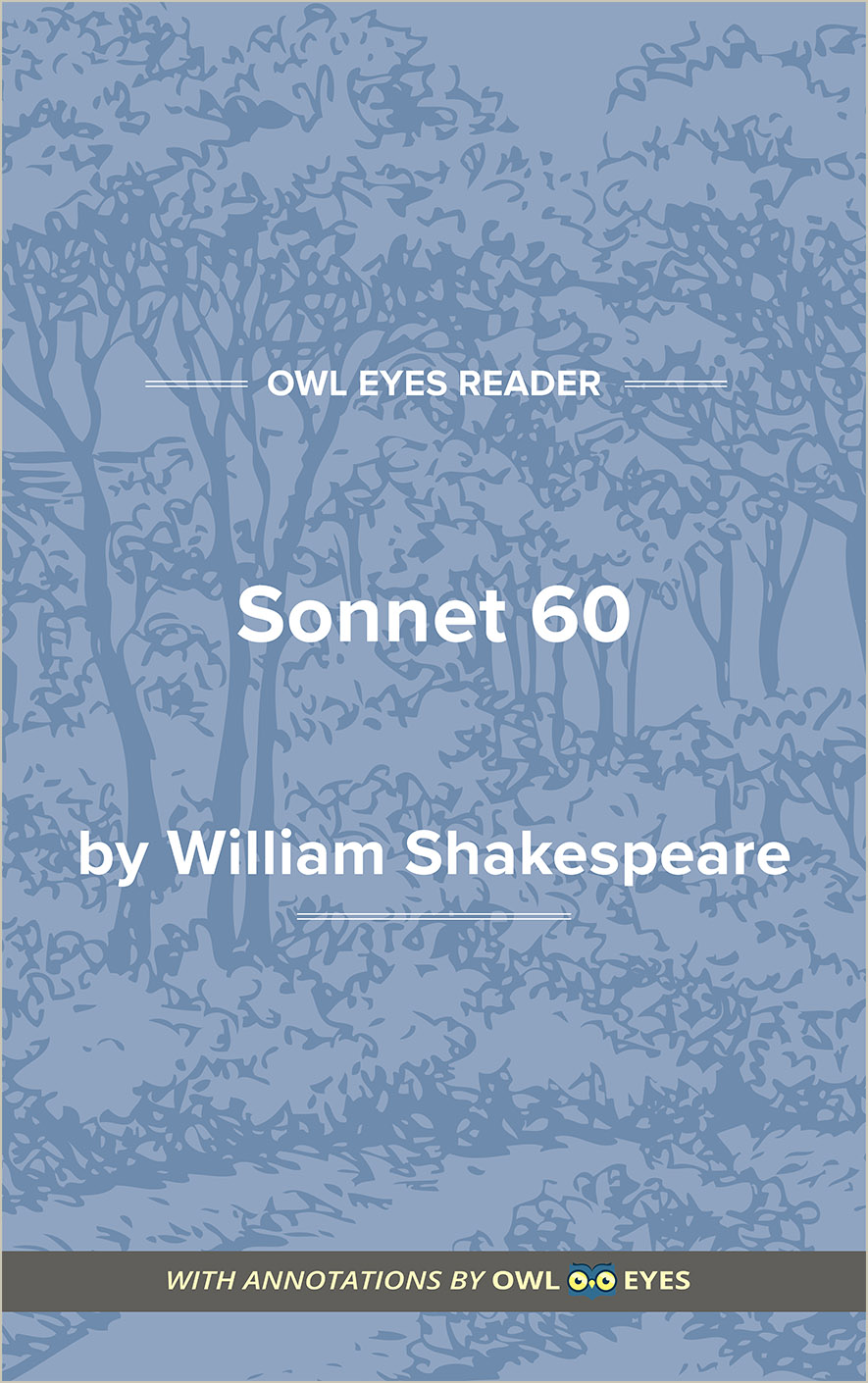Study Guide
Analysis Pages
The Poem
Sonnet 60, like all sonnets, is a fourteen-line poem of one stanza, rhymed according to a traditional scheme. The sonnet is one of 154 untitled sonnets by William Shakespeare, each of which adheres to the form of what is referred to as the English, or Shakespearean, sonnet.
The first quatrain consists of an extended simile, comparing the passage of human life to the onward movement of waves rushing to the seashore. Each wave pushes the one in front of it, and is in turn pushed by the one that follows it. Each following the other in close succession, the waves struggle forward.
The second quatrain introduces a new thought, more directly relating the passage of time to human life. The newborn baby, once it has seen the vast light of day, quickly begins to crawl. This is the first stage in its growth to manhood. Once the human being is “crowned,” however—that is, attains in adulthood its full stature as a royal king, the summit of the natural order—he is not allowed to rest and enjoy his status. The heavenly bodies, which have ruled his destiny since the day he was born, conspire against him to extinguish his glory. The same process that resulted in the gift of birth and growth is now responsible for change and decay.
The third quatrain develops the idea of time as destroyer, highlighting three lethal actions that time performs. First, time tears. It “doth transfix the flourish set on youth,” which means that it pierces through the attractive outward appearance, the flower, of youth. Second, time imprints itself; it...
(The entire page is 403 words.)
Owl Eyes subscribers get unlimited access to our expert annotations, analyses, and study guides on your favorite texts. Master the classics for less than $5/month!

